The Ragsdale Family
by Mrs. Blake Ragsdale Van Leer
The Ragsdale book consist of 260 pages with additional notes, documents, imagery, sources, and references. Like the Van Leer papers, the research is massive and we can only highlight surname origins, timeline, and certain events. Other information is available upon request.
“The name Ragsdale is interesting,” wrote the Windsor Herald, College of Heralds, London, England to Mrs. Blake Ragsdale Van Leer In 1940, it is not at ail common anywhere In England. “This, your compiler has found to be true. The Ragsdale emigration to America, In the early 17th century seems to have been concentrated In Virginia and no other state. Today, they are scattered In every state of the union. Including Hawaii and Alaska. They have served In every war and In many civic and political positions with honor. After many years of research In original records and a visit of Col. Blake Ragsdale Van Leer, then President of Georgia Institute of Technology, Atlanta, Georgia, and mine in 1955 to Nottingham and Nottingham and Rothwell, we agreed with the Hon. R. P. Graham-Vivian, M.C., the Windsor Herald, who also wrote In 1942 that “Ragland is not a form of Ragsdale. The Raglands are one of the old Celtic families. They are Welsh and have various arms, In different branches, chiefly three unicorns, three lions and three fesses.”
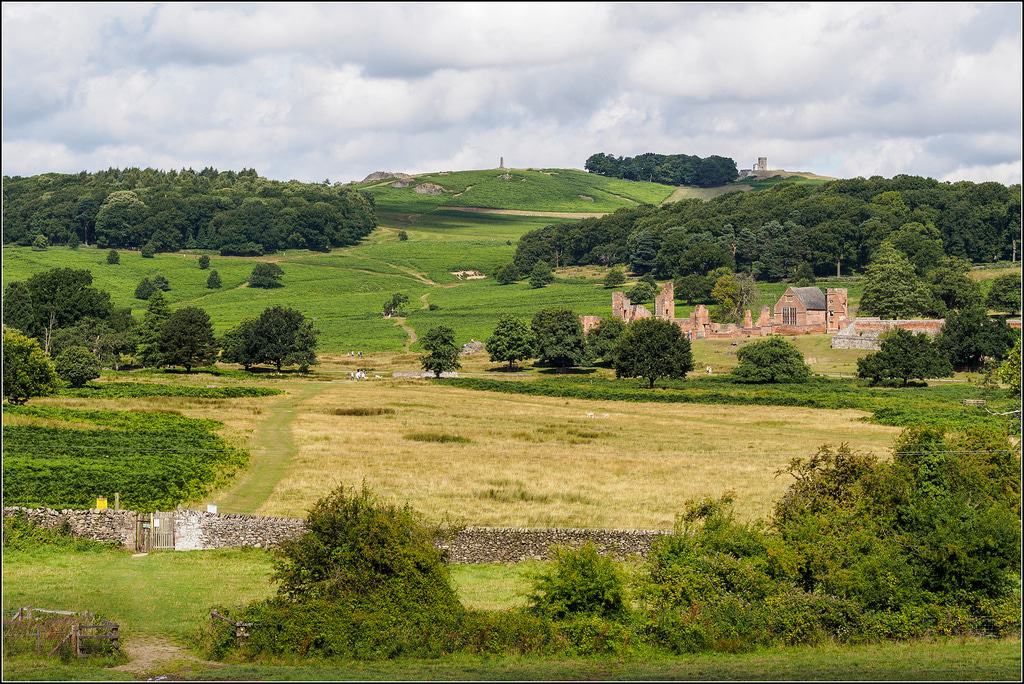
The surname from the Leicestershire area somewhere between Nottinghamshire and Northhamptonshire seven miles from Nottingham. There is a mention of/a small village called “Rakedale”, anciently Regendale, Rakdale, Ragdale Radgdale.
In Nichol’s History of Leicestershire, “It is supposed that the name of the place Is derived from a very remarkable break or Rake, which forms a very deep Dale beginning about
3/4 mile above the village, through which it extends itself a considerable
distance, “til it gradually dimishes to so small a breath as only to allow the
passage of a little brook, which runs to Hoby and there falls into the River
Wreke. “It seems possible the Ragsdales/may lave derived their name from this place.
The first recorded notable Ragsdale appears to be Owen Ragsdale. Owen Ragsdale is recorded as a great student who took his B.A. degree at Oxford, 1560. Owen Ragsdale took his B.A. degree at Oxford, 1560. With the Bishop dying, the folks of Rowell {Rothweli) invited him to teach the school. But in order to improve his own learning he returned again to Oxford and in Lincoln College, undertook the study of Civil Law. But while in this second career at Oxford, his uncle Andrew Oglethorpe died and left his Yorkshire estate to Owen, of which Owen took possession and later returned to Rothweli, married Mary, a daughter of Edward Osborne of Kelmarsh, Esq. She was the widow of Richard Hampden of Rowell. There was a son by her first marriage, but no issue of the marriage with Owen Ragsdaie. He continued his good works, winning the love and admiration of all, but retaining an humble and a grateful mind towards God. “He restored the market to Rothwell and built a Market House at his own expense.” The Market House bears his name prominently on the right side of the central aisle on the south front, matched by those of his executor and biographer, Ferdinando Poulton, on the side of the arch. Having no children of his own, he adopted the poor sons and heirs and ordered a hospital be built for them. This was the Jesus Hospital which has been established by a deed of 1585 but was not erected until after his death. There were several bequests to his relatives and wife, Mary. There are records of Owen’s brother William listed as a witness to events, burials and records. William is listed as a direct ancestor.
Here lies the upright and pious Owen Ragsdale who founded Jesus Hospital. His tomb which can still be seen today reads “He, having received blessings from God, returned it to his poor. He died on the 1st of December, 1591.”
Above the tomb Is a fine brass, about 12″ x 15″ showing Owen Ragsdale kneeling In prayer, with his constant quotation from The Magnificent In Latin also the coat of arms. The brass Is bright and gleaming.
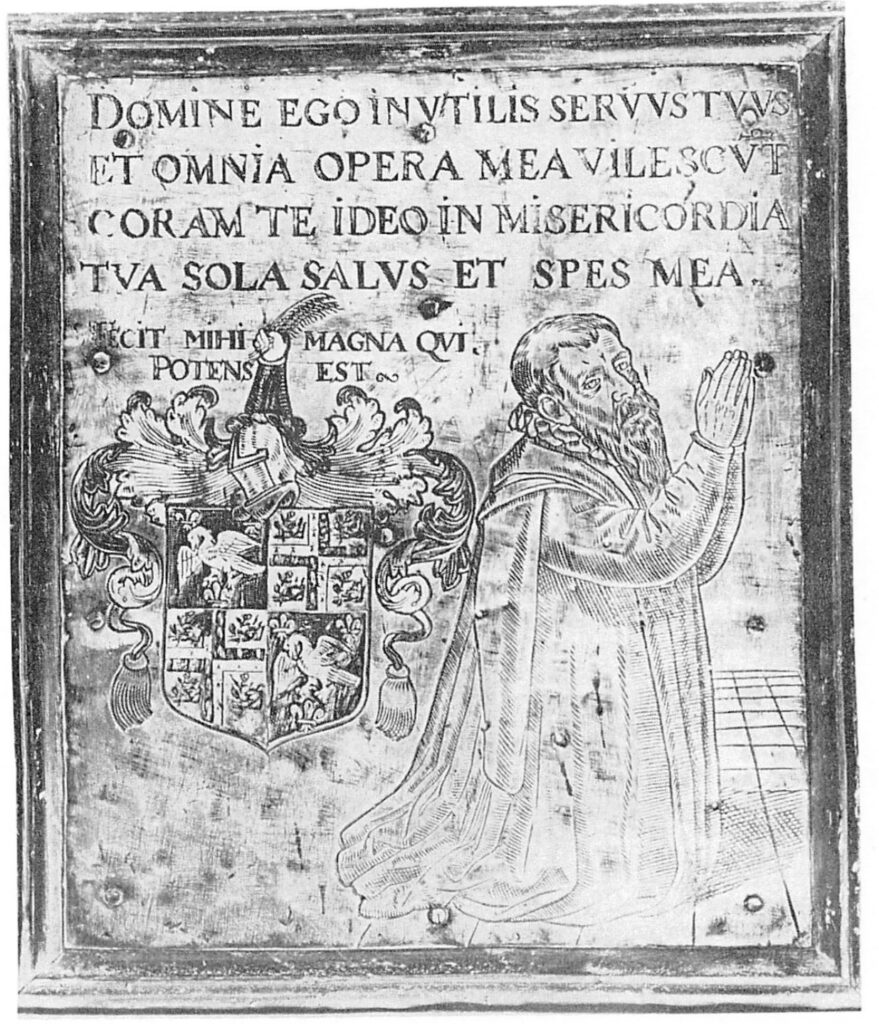
Above the tomb 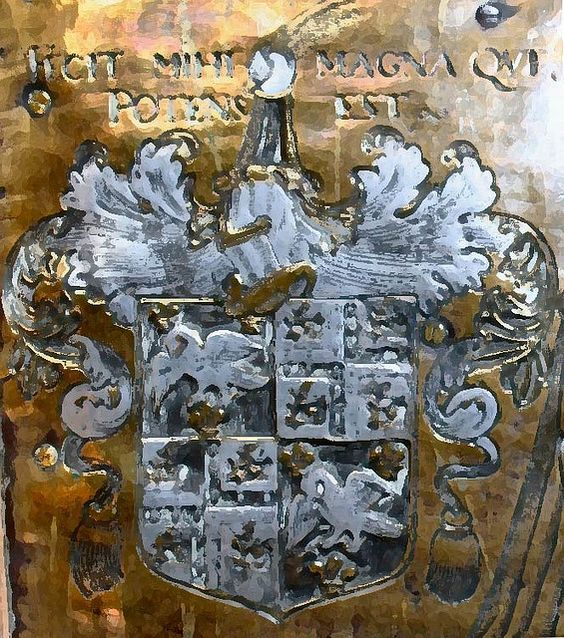
Awarded crest from the Queen of England 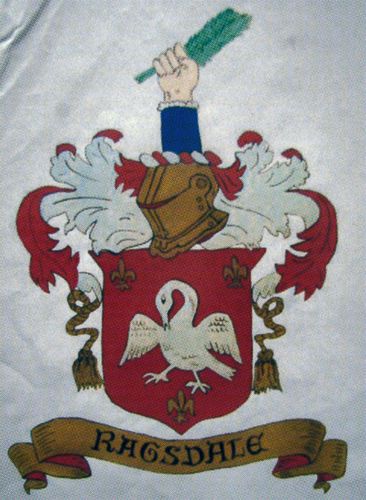
Ragsdale coat of arms
A photography made of the brass hanging over the tomb
of Owen Ragsdale In the Saunoers Chapel of Holy Trinity Episcopal Church,
Rothwell, County Northampton, England. This church Joins Jesus
Hospital, which he established by a deed In 1585.
“The awarding of The Grant of Arms by Elizabeth I, to Owen Ragsdale, Is nicely framed and to think, it has survived ail of these years. “The Arms were awarded “Owen Ragsdall of Rowell, in the County of Northampton, gentleman . . . being descended of an ancient house and family long time bearing arms.
Colonial Beginnings of Ragsdale Family
Godfrey I, who came to America.
Godfrey Ragsdale I and his wife, thought to be Lady Mary Cookney, arrived in Virginia some time late in the summer of 1638. They were the first documented Ragsdales to come to America. Godfrey Ragsdale I and his wife lived in Henrico County Virginia on a 300-acre plantation on February 25, 1642, upon the north side of the Appomattox River.
On April 18, 1644, afterwards known as “Opechancanough Day,” Powhatan natives and several tribes in the a Federation attempted another massacre in hopes of driving people from their land. There was a massacre that was greater than the one in the Norfolk area in 1622. Roughly 500 colonists were killed. Both Godfrey I and his wife were killed.
From documents we know that Godfrey had a son named Godfrey Ragsdale II, who was born in 1644. Because his mother and father had been killed in the 1644 massacre, Godfrey II’s next door neighbors raised him and later became his in-laws. Historians have confirmed that almost all Ragsdales in America came from Godfrey II. In the past is was “all” Ragsdale, however Ragsdale may have immigrated to American in later years.
In later years, several notable Ragsdales would be highlighted in history.
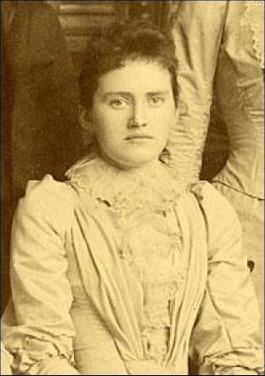
Virginia Ragsdale (December 13, 1870 – June 4, 1945) was a teacher and a mathematician specializing in algebraic curves. She is most known as the creator of the Ragsdale conjecture. Her dissertation, “On the Arrangement of the Real Branches of Plane Algebraic Curves,” was published in 1906 by the American Journal of Mathematics.
Another notable Ragsdale was William P. Ragsdale who was born in c. 1837 and half-Hawaiian, half-Caucasian. His father Alexander Ragsdale was an investor in Virginia who had settled in Hawaii in 1817 and married Kahawaluokalani (Kahawalu), a minor Hawaiian chiefess and a descendant of King Kekaulike of Maui and a distant relative or cousin of Queen Emma. There are many more stories on the Ragsdales and we release an article based on our collection soon. He was a friend of Mark Twain and elements of his life story influenced Mark Twain’s books.
William Ragsdale Cannon (April 5, 1916 – May 11, 1997) was the dean of Candler School of Theology (1953-1968) and an American bishop of the United Methodist Church, elected in 1968. Cannon was highly influential in the Council of Bishops of the U.M. Church. For example, he delivered the episcopal address at the 1984 General Conference, the highest honor conferred on a bishop by his/her episcopal colleagues.
More coming soon!